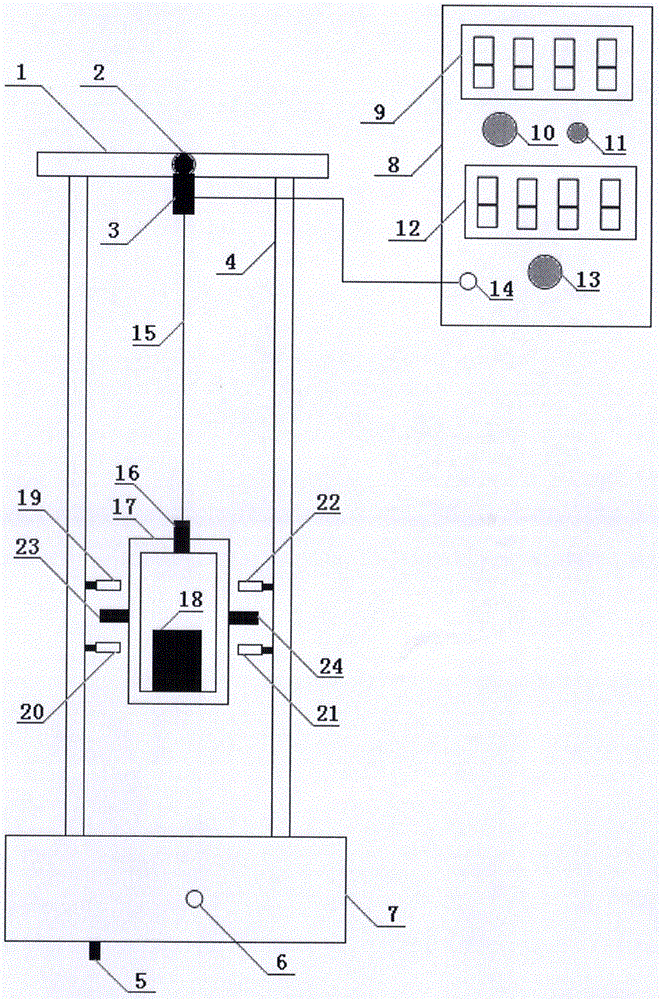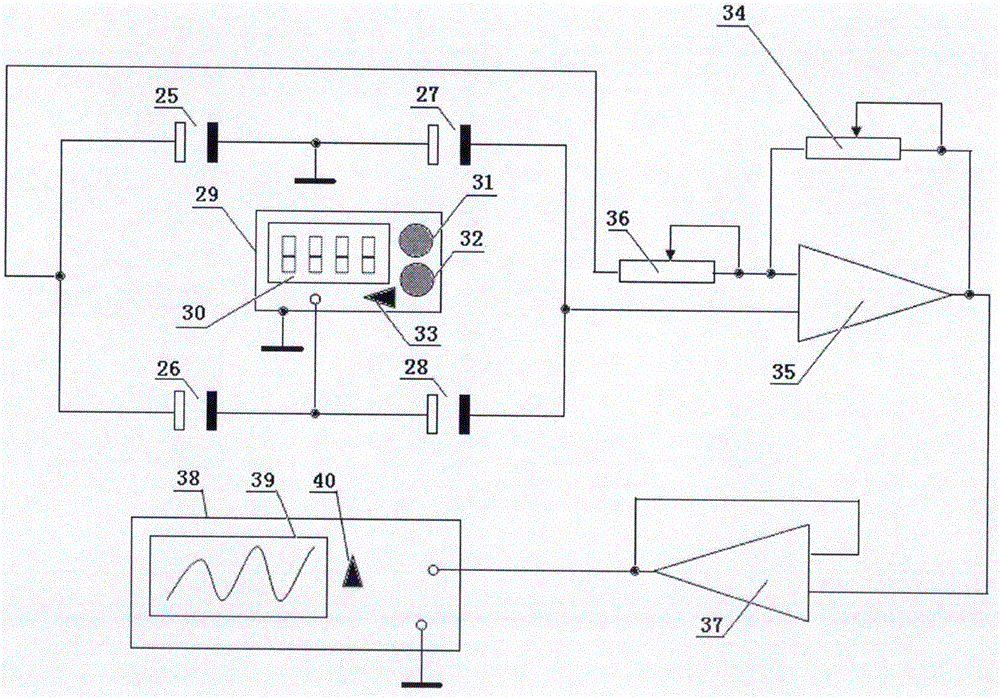Experimental device and method for measuring Young's modulus of metal wire based on resonance principle
A technology of Young's modulus and experimental equipment, applied in teaching models, educational tools, instruments, etc., can solve problems such as difficult to understand, single principle, and many precautions
- Summary
- Abstract
- Description
- Claims
- Application Information
AI Technical Summary
Problems solved by technology
Method used
Image
Examples
Embodiment Construction
[0039] In the figure, a bracket 4 is set on the bracket base 7, a beam 1 is set on the upper end of the bracket 4, an upper chuck 2 and a vibrator 3 are arranged in the middle of the beam 1, and one end of a metal wire 15 is connected with the upper chuck 2 and the vibration exciter 3, and the other One end links to each other with the lower chuck 16, and the lower chuck 16 is fixed together with a metal frame 17, and an iron block 18 is fixed inside the metal frame 17. The exciter 3 is connected to the sinusoidal signal source 8 through the interface 14 between the exciter and the sinusoidal signal source, and the sinusoidal signal voltage amplitude output by the sinusoidal signal source 8 can be continuously adjusted by the sinusoidal signal voltage amplitude adjustment knob 13, and can be adjusted at The sinusoidal signal voltage amplitude is displayed on the display screen 12; the sinusoidal signal frequency can be continuously adjusted through the sinusoidal signal frequen...
PUM
 Login to View More
Login to View More Abstract
Description
Claims
Application Information
 Login to View More
Login to View More - R&D
- Intellectual Property
- Life Sciences
- Materials
- Tech Scout
- Unparalleled Data Quality
- Higher Quality Content
- 60% Fewer Hallucinations
Browse by: Latest US Patents, China's latest patents, Technical Efficacy Thesaurus, Application Domain, Technology Topic, Popular Technical Reports.
© 2025 PatSnap. All rights reserved.Legal|Privacy policy|Modern Slavery Act Transparency Statement|Sitemap|About US| Contact US: help@patsnap.com



